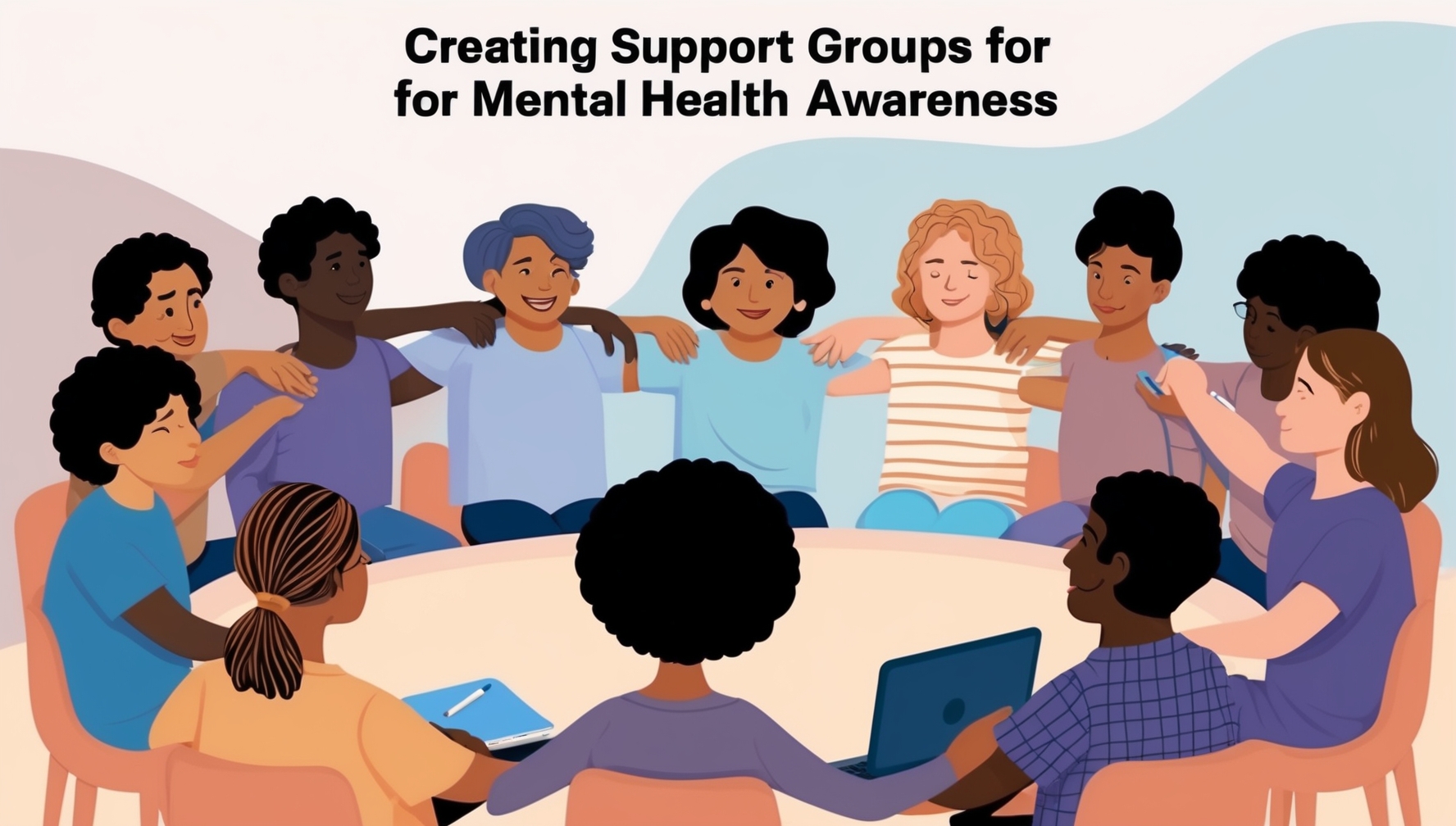Support groups play a crucial role in mental health awareness and support, providing a safe space for individuals to share their experiences, gain insights, and receive encouragement. Here’s a guide to help you establish effective support groups for mental health awareness:
1. Define the Purpose and Goals
Identify the Need: Assess the mental health needs within your community through surveys or by hosting community health and wellness workshops. Determine the specific issues or conditions your support group will address, such as anxiety, depression, or trauma.
Set Clear Objectives: Establish the goals of the support group. Objectives might include providing emotional support, sharing coping strategies, reducing stigma, or fostering a sense of community.
2. Plan the Structure
Choose a Format: Decide on the format of the support group. Options include peer-led groups, facilitated by mental health professionals, or a combination of both. Consider virtual meetings for broader accessibility.
Determine the Frequency and Duration: Set a schedule for meetings, such as weekly, bi-weekly, or monthly. Decide on the duration of each session, typically ranging from 1 to 2 hours.
Select a Meeting Venue: Choose a location that is comfortable, accessible, and private. This could be a community center, library, or virtual platform. Ensure the space is conducive to open and respectful discussion.
3. Recruit and Train Facilitators
Find Qualified Facilitators: Recruit individuals with experience or qualifications in mental health to lead the group. This could include licensed therapists, counselors, or trained peer supporters.
Provide Training: Offer training for facilitators on group dynamics, active listening, confidentiality, and managing challenging situations. Ensure they understand the importance of maintaining a supportive and non-judgmental environment.
4. Promote the Support Group
Create Promotional Materials: Develop flyers, posters, and social media content to spread the word about the support group. Include essential details such as the purpose, meeting schedule, location, and contact information.
Utilize Multiple Channels: Promote the group through local community centers, healthcare providers, schools, and online platforms. Partner with mental health organizations to reach a wider audience. Consider participating in or setting up a booth at a community health fair to raise awareness about the support group.
Engage with Community Leaders: Collaborate with local influencers, mental health advocates, or community leaders to endorse and promote the support group. Their support can help raise awareness and credibility.
5. Facilitate Effective Meetings
Establish Ground Rules: At the first meeting, set ground rules to ensure a respectful and safe environment. Emphasize confidentiality, active listening, and the importance of respecting differing opinions.
Encourage Participation: Create an inclusive atmosphere where all members feel comfortable sharing their experiences and insights. Encourage open dialogue and validate participants’ feelings.
Provide Resources: Offer educational materials, resource guides, and information on additional mental health services. Provide contact details for local mental health professionals and crisis support.
Monitor and Adapt: Regularly assess the effectiveness of the support group. Gather feedback from participants and facilitators to identify areas for improvement. Adapt the group’s structure or approach as needed to better meet the needs of the members.
6. Foster a Supportive Community
Build Relationships: Encourage participants to build connections and support each other outside of meetings. Organize social events or networking opportunities to strengthen the community.
Celebrate Achievements: Acknowledge and celebrate the progress and achievements of group members. Recognize milestones and offer positive reinforcement to foster motivation and hope.
Address Challenges: Be prepared to handle conflicts or issues that may arise within the group. Address concerns promptly and seek guidance from mental health professionals if necessary.
7. Evaluate and Expand
Assess Impact: Regularly evaluate the impact of the support group on participants’ mental health and well-being. Use surveys or feedback forms to gather insights and measure the group’s effectiveness.
Expand the Reach: Consider expanding the support group to address additional mental health topics or to create specialized groups for different demographics. Use feedback and community needs assessments to guide expansion efforts.
Promote Sustainability: Develop strategies to ensure the long-term sustainability of the support group. This might include securing funding, recruiting additional facilitators, or partnering with local organizations for ongoing support.
Conclusion
Creating support groups for mental health awareness involves careful planning, effective promotion, and a commitment to providing a safe and supportive environment. By focusing on the needs of your community and fostering a sense of belonging, you can help individuals navigate their mental health journeys and contribute to greater awareness and support.






